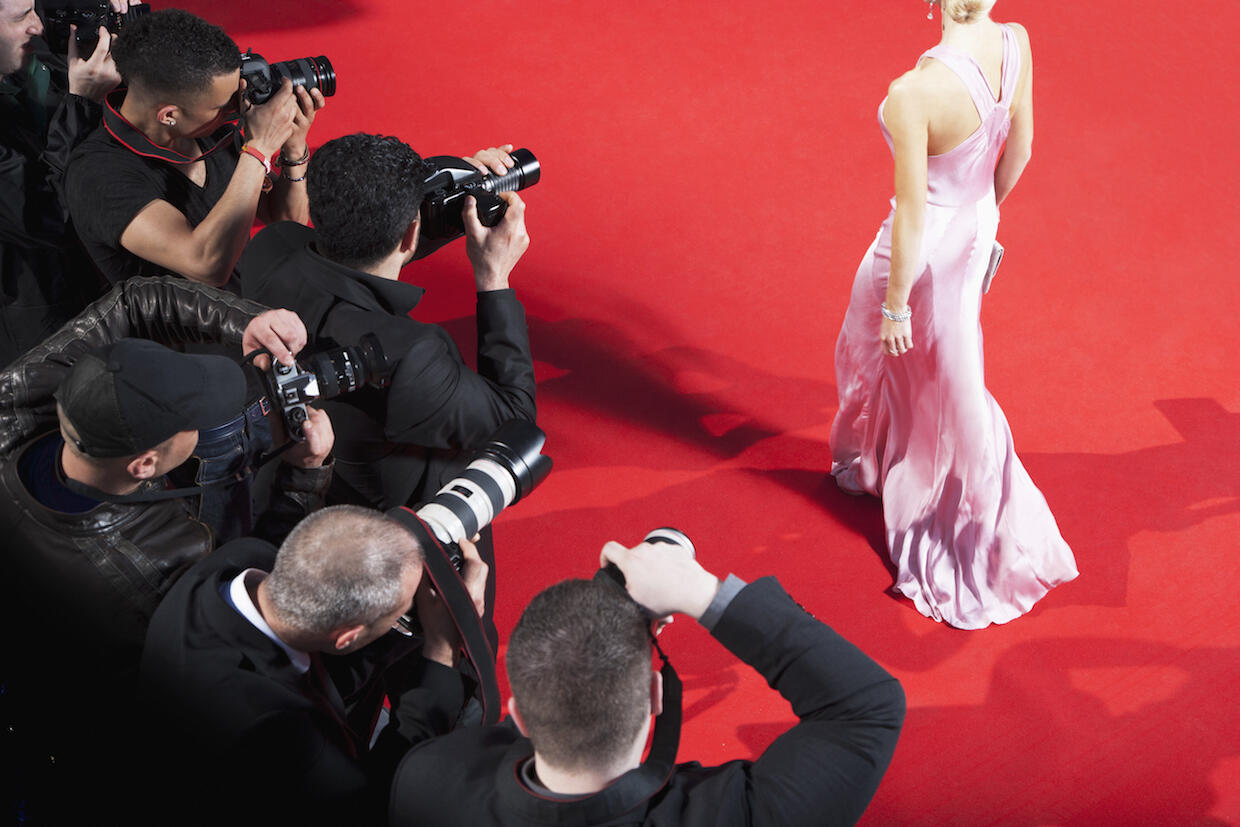
Feb. 22, 2019
They wore what?
VCU fashion experts discuss our fascination with the annual Academy Awards red carpet.
Share this story
While you might not remember which movie won best picture at the 2012 Academy Awards, chances are you remember what Angelina Jolie wore that year.
Her black Versace gown sparked numerous “Angie’s right leg” parodies from Twitter accounts to imitators who digitally placed her leg onto their own photos.
Since its first televised airing in 1953, the red carpet has captured America’s interest almost as much as the Oscars themselves. VCU News talked to sartorial experts in the VCU Department of Fashion Design & Merchandising about our fascination with who wore what.
Why are we so interested in Oscars fashion?
Donna Reamy, associate professor, fashion merchandising: The red carpet is to the Oscars what commercials are to the Super Bowl. Both are expected by the general public when watching these major events on TV. Both are very entertaining. Both connect the consumer to their emotions. Both attempt to sell a name or a product, or both. And both use product placement as a way of engaging the consumer to potentially buy or desire a product. In addition, some consumers will tune in to those events specifically to view the red carpet and Super Bowl commercials respectively.
What are you wearing? This question dates back to the red carpet 20 years. It is not a question the average consumer would be asked; it is a question that is generally asked only on the red carpet or perhaps on a talk show from a host to a guest who is wearing something spectacular. Consumers will tune in to hear the question asked by commentators to their favorite stars. The glitz and glamour of Hollywood and show business intrigues the average person. As a result, the demand to continue the red carpet prior to the Oscars grows.
In recent years, Hollywood has used awards shows to promote activism, such as wearing black to support the #MeToo movement at last year’s Golden Globe Awards. When did fashion take on such a powerful position in world events?
Jarvis Jefferson, assistant professor of merchandising: Whether directly or indirectly, proactively or by default, fashion has long had its finger on the pulse of the times. In the modern era, for example, pants for women were born from the feminist movement of the late 1800s when women tired of the Victorian-era attire that was becoming more and more impractical given the wide variety of activities available to them. Pants for women were solidified during WWI and WWII when women took on jobs as factory workers, miners and conductors in the absence of men who were off at war. A youth/anti-war movement is responsible for the counterculture hippie fashions seen in the late 1960s consisting of short skirts, bell-bottom pants, bright geometric prints and men with long hair. During the same time, the Civil Rights Act of 1964 and the increasing visibility of black Americans introduced the Afro hairstyle as a symbol of pride and homage to anyone of African ancestry. Even today, fashion continues to push the envelope as controversy swirls around Gucci's "blackface" sweater and Burberry's "noose" hoodie — a direct reflection of what's happening in world news today.
What would you say was the most controversial/daring Oscar outfit?
Patricia Brown, department chair: There are two that really stand out. In 1969, while receiving her Oscar for “Funny Girl,” Barbra Streisand wore a quite sheer Arnold Scaasi pantsuit. Another contender, although not about bareness, would have to be Bjork’s swan dress, donned for the 2001 Oscars. In contrast to Bjork’s choice, this particular Oscars show included Julia Roberts in a most beautiful and tastefully elegant, vintage Valentino gown; several other well-known actresses in gorgeous solid columns; and Halle Berry in her beautifully detailed and very flattering full-skirted gown. Bjork always followed her own drummer, but this choice sparked much conversation.
What would you say was the best Oscar outfit and why?
Brown: I would have to say one of the following two, as I never could choose just one!
To the 77th Oscars in 2005, Hilary Swank wore a navy-blue, open-back dress by Guy Laroche. The color was deep and flattering, as was the fit and cut of the dress on her well-toned and well-proportioned silhouette. The design definitively highlighted her best features.
In 2012, Gwyneth Paltrow wore a dramatically gorgeous and simple white cape dress designed by Tom Ford. The color white added substantially to the drama. This choice that was not bare, but a slightly more covered alternative, allowing her fit silhouette to show in the draped column underneath the cape. The design itself was both flattering and supremely elegant on Gwyneth.
Subscribe to VCU News
Subscribe to VCU News at newsletter.vcu.edu and receive a selection of stories, videos, photos, news clips and event listings in your inbox.










